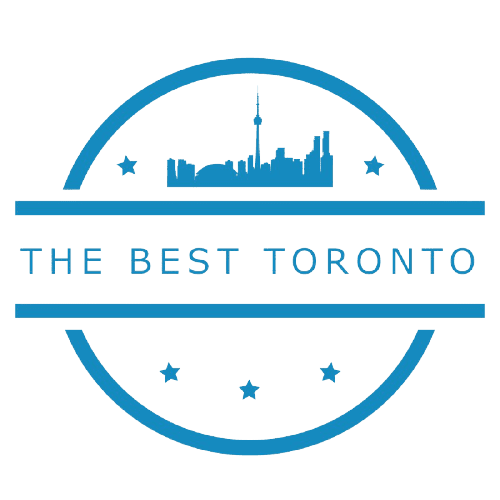Attic Mold Inspection Toronto
Toronto homeowners need attic mold inspection because mold starts growing within 48 hours of moisture exposure. Attics face a higher risk of mold outbreaks when condensation builds up from rain, moisture, ice, and heat. Our company’s mold removal requests in Toronto have increased over the last several years. Our team’s 17 years of experience in mold inspection and removal services help us address your home’s mold concerns. Toronto’s certified mold removal costs between $4.00 and $6.00 per square foot. Many companies provide free assessments to check the problem. Your attic’s yearly mold inspections are a great way to get information about potential issues before they become severe. This blog covers all you need to know about attic mold inspection in Toronto. It includes early warning signs, certified testing, and affordable removal methods. Why Attic Mold is a Growing Concern in Toronto Toronto homeowners deal with unique challenges when their attics develop mold. Mold growth in Toronto attics isn’t just possible—it’s a constant threat that needs regular monitoring and proactive checks. Toronto’s climate and attic conditions The city faces extreme weather patterns all year that create perfect conditions for mold to thrive. Toronto has hot, humid summers and cold, wet winters. This creates a perfect environment for moisture problems in attics. Cold winter months create a huge temperature difference between warm indoor air and cold attic surfaces. This causes condensation when these air masses meet. Ice dams also tend to form during winter and force water under shingles into attic spaces. Summer brings its own problems. The city’s high humidity makes it hard for moisture to evaporate. The hot summer sun heats roofing materials and creates thermal cycling that pushes moisture into attic spaces. The changing seasons and high humidity make Toronto’s attics extremely prone to mold growth. Why is it most common for mold to grow in attics? Attics top the list as the most common places for mold to grow, and with good reason, too. We found these areas filled with materials. They included wood beams, cardboard boxes, and some types of insulation. The insulation can easily soak up moisture. These materials become perfect food sources for mold. Most homeowners rarely check their attics. Water damage signs often go unnoticed until stains or musty smells appear in other parts of the house. Mold can grow hidden for years, which makes cleanup much harder and can get pricey by the time someone finds it. Common signs of attic mold Finding attic mold early can save Toronto homeowners from significant issues. Here are the warning signs to watch: The best time to check your attic is following heavy rain, snowmelt, or between seasons when mold loves to grow quickly. How to Inspect for Mold in the Attic Attic inspections for mold need careful attention and a step-by-step approach. You should check regularly since mold can start growing just 48 hours after moisture exposure. Visual signs to look for Start by examining your attic space carefully. Here’s what you need to watch for: These visual signs help spot potential problems, but mold often grows in hidden spots. If you smell musty odours without seeing any signs, mold might exist inside the walls or ceiling cavities. Using moisture meters and thermal imaging Professional tools can substantially boost your ability to detect mold: Moisture meters tell you how damp materials like wood and drywall are. Wood with readings above 17% shows a high risk for mold growth. These devices help you find moisture sources before mold becomes visible. Thermal imaging cameras spot temperature differences you can’t see with your eyes. These advanced tools identify cool areas that might have moisture. Expert inspectors can check your attic without going inside. They can see if temperature differences between the attic and the house matter. Thermal imaging can’t see through walls but detects surface temperature changes from moisture. This technology lets you check large areas quickly without surface damage. When to call attic mold inspection specialists DIY attic inspections mold removal help, but some situations need professional expertise: Certified inspectors use specialized equipment like industrial-grade moisture meters, thermal cameras, and hygrometers to check indoor humidity. They know how to take samples safely without spreading contamination. Certified experts can also find the mechanisms of moisture problems—crucial to stop mold from coming back after cleanup. What Happens During a Certified Attic Mold Inspection Certified attic mold inspection starts when technicians arrive at your home. Understanding this process will help you know what happens in each phase of this important assessment. Original assessment and air quality testing Toronto Qualified technicians begin with a complete visual assessment of your attic space. They look for visible signs of moisture, staining, and active mold growth. Their special equipment includes thermal imaging cameras. These cameras reveal hidden moisture. They also use thermal hygrometers to measure temperature and humidity levels. These tools help them find issues you can’t see with your eyes. The team checks ventilation and airflow. They inspect soffits, baffles, exhaust fans, and roof vents. This helps them understand why issues occur. Sampling and lab analysis After completing the visual assessment, technicians collect air samples with specialized pumps that pull air through mold spore traps. Every proper test needs at least two samples – one from your attic and another from outside as a “control” sample to match for results. An accredited third-party laboratory analyzes these samples, usually providing results within 2-4 days. This unbiased testing shows whether mold spore levels are normal, moderate, or high. Reporting and next steps The lab analyzes the data, leading to a detailed report that outlines any air quality issues found. Professional inspectors will walk you through the findings and recommend specific solutions based on the results. When they confirm mold, they create a complete remediation plan that tackles both the mold and why it happens. This systematic approach will give a lasting solution while preventing future outbreaks through targeted moisture control measures. Attic Mold Removal and Prevention Strategies Spotting mold in your attic requires quick action. A professional cleanup provides you with the safest and quickest way









